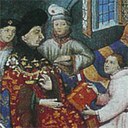0006 Feuereisen im Dienst politischer Propaganda von Burgund bis Habsburg. Zur Entwicklung der Symbolik des Ordens vom Goldenen Vlies von Herzog Philipp dem Guten bis Kaiser Ferdinand I.
Identifiers (Article)
Identifiers (Files)
Abstract
Since the reign of Philip the Good, the combination of fire-iron, flint and fire has been used in the Duchy of Burgundy for symbolic purposes. On the founding of his Order of the Golden Fleece in the year 1430, the Golden Ram was added to create the symbol of the Order. The article sheds light on the way this symbolism was utilised within the iconography of the Dukes Philip the Good and Charles the Bold as well as the Emperors Maximilian I. and Ferdinand I. The motivation approaching and analysing this question arose out of the substantially unrecognized elitist usage and scale of implementation of this imagery under Ferdinand I. which never has been a subject of intense research so far. Compared to his predecessors, Ferdinand I. used these symbols in all his art procurement with exceptional concentration, especially on his residential architecture, i.e. the Belvedere in Prague, Bratislava Castle, and the Hofburg in Vienna. This had an enduring effect also on the art of his successors.
Statistics


License

This work is licensed under a Creative Commons Attribution-NonCommercial-NoDerivatives 4.0 International License.



